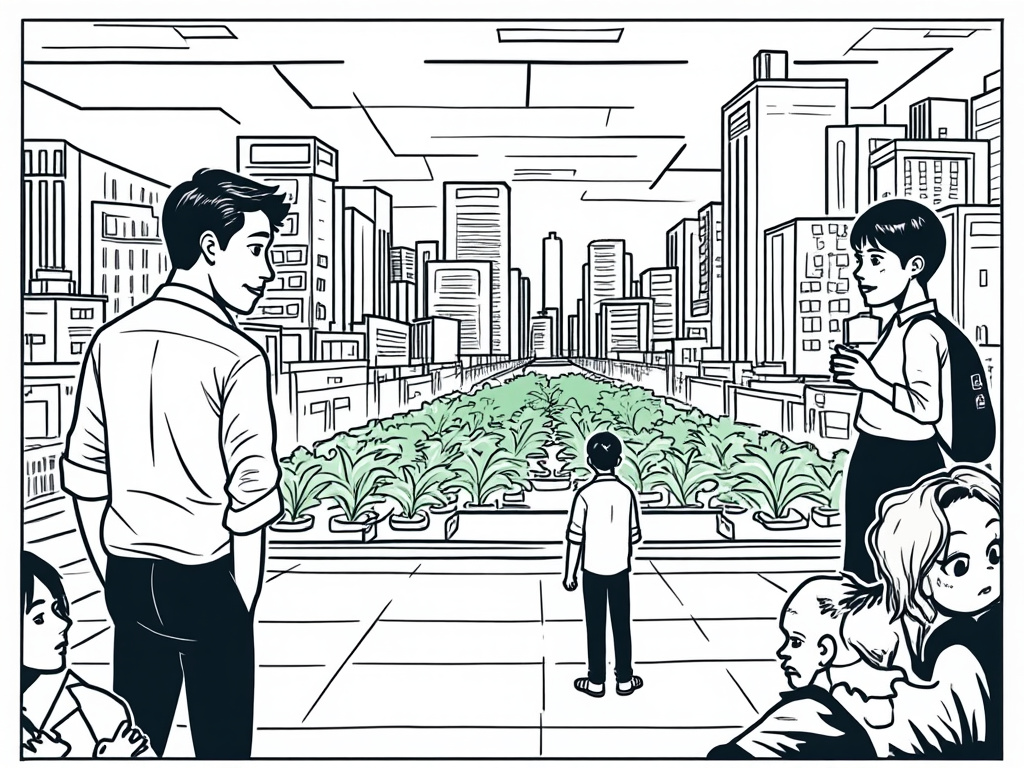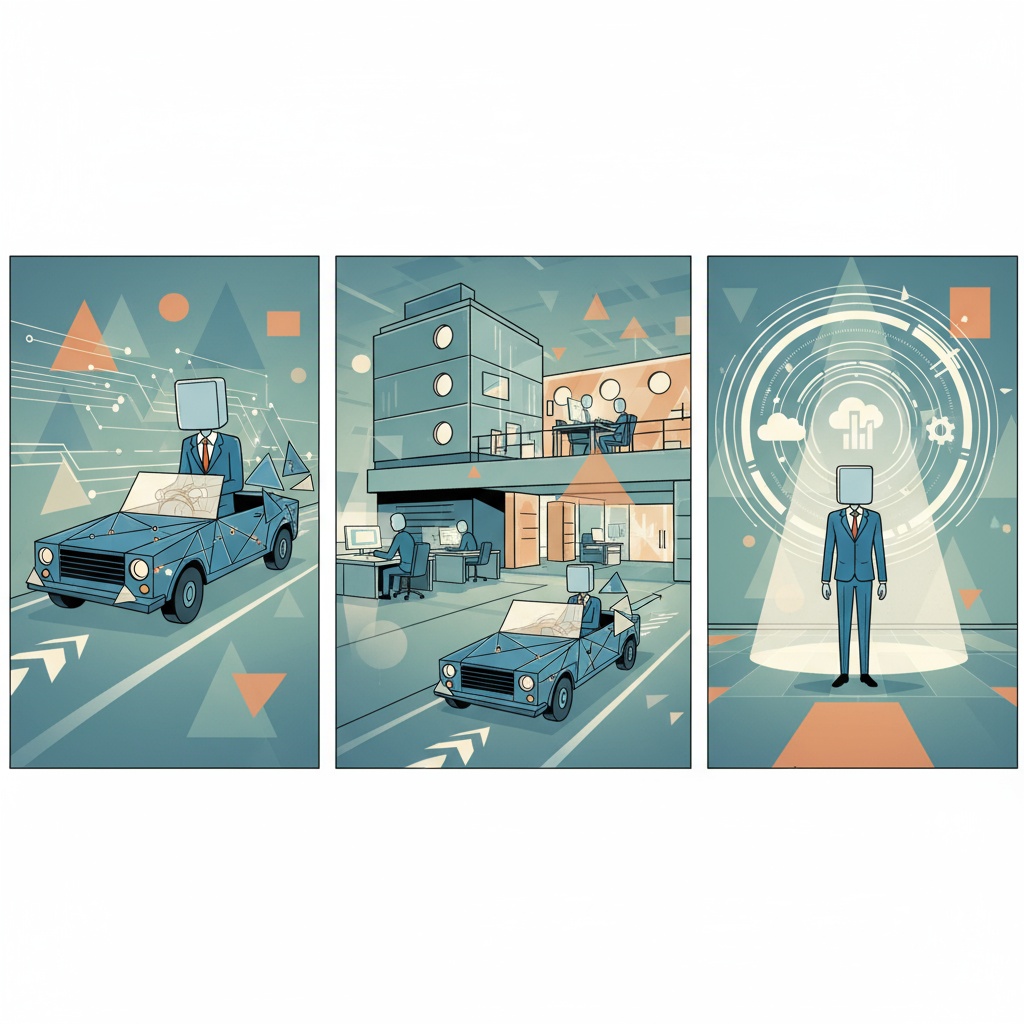
Dubai Farms: Cultivating Green Innovation in the Desert
Reading time: 12 minutes
Table of Contents
- Introduction: The Urban Agriculture Revolution in Dubai
- Overcoming Desert Challenges: Dubai’s Agricultural Transformation
- Key Urban Farming Initiatives Reshaping Dubai
- Cutting-Edge Technologies Driving Dubai’s Agricultural Renaissance
- Sustainability Metrics: Measuring Impact and Progress
- Success Stories: Pioneers of Dubai’s Urban Farming Movement
- Economic Impact and Investment Landscape
- Future Directions: Dubai’s Agricultural Vision 2040
- Your Urban Farming Roadmap: From Concept to Harvest
- Frequently Asked Questions
Introduction: The Urban Agriculture Revolution in Dubai
Ever wondered how a city built on sand could transform into a hub of agricultural innovation? Dubai’s urban farming initiative isn’t just challenging conventional wisdom—it’s completely rewriting it.
In a region where temperatures regularly soar above 45°C and annual rainfall rarely exceeds 100mm, Dubai has launched one of the world’s most ambitious urban agriculture programs. This isn’t merely about growing food; it’s about reimagining how cities function in resource-constrained environments.
The stark reality is this: the UAE imports approximately 90% of its food, creating both economic vulnerability and significant carbon footprints. Dubai’s urban farming initiative addresses this head-on, turning rooftops, warehouses, and even abandoned lots into productive growing spaces.
“What we’re witnessing in Dubai isn’t just agricultural development—it’s a fundamental shift in how we conceptualize food security in extreme environments,” explains Dr. Jamila Al Futtaim, agricultural sustainability expert at the Emirates Food Security Council.
Let’s dive into how Dubai is transforming from a food import-dependent metropolis to a pioneering urban farming laboratory that’s capturing global attention.
Overcoming Desert Challenges: Dubai’s Agricultural Transformation
Imagine trying to grow delicate leafy greens in an environment where summer temperatures can melt plastic and water is more precious than oil. That’s precisely the challenge Dubai has embraced—and is increasingly mastering.
The Water Conundrum
With less than 100mm of annual rainfall and limited groundwater, traditional agriculture in Dubai faces severe constraints. The government’s response has been twofold:
- Advanced desalination technologies that now provide over 98.8% of Dubai’s potable water
- Mandatory water recycling systems in all new urban farming projects, reducing freshwater usage by up to 90% compared to conventional farming
Consider this practical example: Badia Farms, Dubai’s first vertical farm, uses 90% less water than traditional farms while producing 3,500kg of greens monthly. They’ve implemented a closed-loop irrigation system where water is continuously recycled, with evaporation captured and reintroduced into the system.
Temperature Management Innovations
Dubai’s extreme heat presents another formidable challenge. Urban farming initiatives have responded with:
- Climate-controlled growing environments utilizing renewable energy
- Strategic timing of growth cycles to maximize cooler night temperatures
- Thermal-resistant building materials that naturally regulate temperature
One fascinating implementation is at Emirates Crop One, where AI-controlled climate chambers adjust not just temperature but also air velocity, humidity, and even CO2 levels to create perfect growing conditions regardless of external temperatures.
The results speak for themselves: year-round production cycles that would be impossible in conventional desert agriculture, with yields up to 30 times higher per square meter.
Key Urban Farming Initiatives Reshaping Dubai
Dubai’s transformation isn’t happening through isolated projects but through a coordinated ecosystem of initiatives. Let’s examine the key programs driving this agricultural renaissance:
Food Security Strategy 2051
Launched in 2018, this ambitious national strategy aims to place the UAE at the top of the Global Food Security Index by 2051. Urban farming in Dubai forms a central pillar of this plan, with specific targets including:
- Development of 100+ commercial urban farms by 2030
- 30% reduction in food imports by 2035
- Creation of a dedicated AgTech innovation hub with $500M in investment capital
“The Food Security Strategy isn’t just about growing more food locally—it’s about developing exportable technology solutions that can transform agriculture globally,” notes Sheikh Mohammed bin Rashid Al Maktoum, UAE Vice President and Ruler of Dubai.
Dubai Vertical Farming Incubator
This unique public-private partnership provides startup funding, technical expertise, and regulatory fast-tracking for vertical farming ventures. Since its 2019 launch, the incubator has:
- Supported 23 vertical farming startups
- Facilitated over $120 million in private investment
- Developed 17 patent-pending agricultural technologies
The standout success story here is Pure Harvest Smart Farms, which secured $100 million in funding to develop climate-controlled greenhouses producing premium tomatoes, strawberries, and leafy greens year-round in the desert climate.
Community Farming Networks
Not all initiatives are high-tech or large-scale. Dubai has also embraced community-based urban farming through:
- The Sustainable City’s productive landscapes – Residential community with 11 biodomes producing over 3,000kg of vegetables monthly
- Rooftop Farming Program – Converting hotel and commercial building rooftops into productive gardens
- School Growing Initiative – Educational program that has installed gardens in 78% of Dubai’s schools
These community-focused projects serve multiple purposes: food production, education, community building, and mental health benefits through green space interaction.
Cutting-Edge Technologies Driving Dubai’s Agricultural Renaissance
Dubai’s approach combines ancient wisdom with tomorrow’s technology. Here’s how cutting-edge innovation is making the impossible possible:
Hydroponic and Aeroponic Systems
Traditional soil-based agriculture simply isn’t viable in Dubai’s sand-dominant landscape. The solution? Soil-less growing systems:
- Hydroponic systems using mineral nutrient solutions in water solvent
- Aeroponic systems where roots are misted with nutrient-rich water
- Aquaponic systems combining fish farming with plant cultivation
These systems deliver remarkable efficiencies: up to 95% less water usage, 60% less fertilizer, and productivity rates 100 times greater per square foot than conventional farming.
Real-world example: Emirates Flight Catering’s vertical farm produces 2,700kg of leafy greens daily using 99% less water than conventional farming, all delivered to airline meals within hours of harvest.
AI and IoT Integration
The farms of Dubai aren’t just high-tech—they’re smart. Artificial intelligence and Internet of Things sensors create continuously optimizing growing environments:
- Predictive algorithms adjusting nutrient delivery based on plant growth patterns
- Computer vision systems detecting early signs of disease or stress
- Autonomous harvesting systems reducing labor requirements
At UNS Farms in Dubai South, machine learning algorithms have reduced water consumption by an additional 30% beyond standard hydroponic baselines by predicting precise plant needs based on multiple environmental factors.
Renewable Energy Integration
Energy-intensive climate control would be environmentally and economically unsustainable without Dubai’s leadership in renewable energy:
- Solar-powered cooling systems specifically designed for vertical farms
- Energy-efficient LED lighting calibrated to specific plant photosynthesis requirements
- Thermal energy storage systems capturing daytime heat for nighttime use
The Innovation Hub at Dubai Food Park now operates at 87% energy self-sufficiency, with plans to reach net-zero energy consumption by 2025.
Sustainability Metrics: Measuring Impact and Progress
How do we measure success in Dubai’s urban farming revolution? Here’s a comparative look at key sustainability metrics:
| Sustainability Metric | Conventional Desert Agriculture | Dubai Urban Farming | Improvement Factor |
|---|---|---|---|
| Water Usage (liters per kg produce) | 250-400 | 1-20 | 20-95% reduction |
| Carbon Footprint (kg CO2 per kg produce) | 2.5-3.8 | 0.6-1.2 | 60-75% reduction |
| Food Miles (average km traveled) | 3,200 | 12 | 99% reduction |
| Land Efficiency (kg produce per square meter) | 3-5 | 50-120 | 1,500-2,400% increase |
| Food Waste (%) | 30-40% | 5-7% | 80-85% reduction |
These metrics tell a compelling story: Dubai’s urban farms aren’t just producing food—they’re fundamentally reimagining agricultural efficiency in resource-constrained environments.
Comparative Water Efficiency in Dubai Farming Systems
Relative water usage compared to traditional desert agriculture (lower is better)
Success Stories: Pioneers of Dubai’s Urban Farming Movement
Behind the statistics are real ventures revolutionizing Dubai’s food landscape. Let’s examine two standout success stories:
Badia Farms: From Concept to Scale
When Omar Al Jundi launched Badia Farms in 2016, skeptics dismissed it as a novelty project. Today, it’s Dubai’s largest vertical farm and a case study in agricultural innovation:
- Challenge: Creating commercially viable vertical farming in one of the world’s harshest climates
- Solution: Proprietary hydroponic system combined with AI-controlled microclimate management
- Results:
- Monthly production of 3,500kg of pesticide-free greens
- 90% water reduction compared to traditional methods
- Supply contracts with 27 high-end restaurants and 4 supermarket chains
“We didn’t just want to grow lettuce—we wanted to prove that Dubai could become a net exporter of agricultural technology,” explains Al Jundi. “Now we’re consulting on vertical farm projects across the Middle East and North Africa.”
Bustanica: Emirates’ Sky-High Farm
When Emirates Airline partnered with Crop One Holdings to create Bustanica, they established a new benchmark for vertical farming scale:
- Challenge: Reducing the airline’s massive imported food carbon footprint
- Solution: 330,000 sq. ft. vertical farm facility near Al Maktoum International Airport
- Results:
- Daily production of 3,000kg of leafy greens
- 99% water reduction compared to outdoor farming
- Zero pesticides or herbicides used
- From harvest to airline meal in under 24 hours
This $40 million facility demonstrates how vertical farming can effectively address food security, sustainability, and quality simultaneously at commercial scale.
Economic Impact and Investment Landscape
Dubai’s urban farming initiative isn’t just an environmental play—it’s creating a vibrant economic ecosystem:
Investment Flows and Funding Landscape
The urban agriculture sector in Dubai has attracted over $650 million in investment since 2018, coming from diverse sources:
- Government funding: $150 million in direct grants and subsidized land
- Venture capital: $280 million across 18 AgTech startups
- Corporate investment: $220 million from food industry players
What’s driving this investment enthusiasm? The promise of substantial returns combined with meaningful impact. According to a recent PwC analysis, Dubai’s urban farming sector is projected to grow at 23% CAGR through 2030, significantly outpacing global averages.
Job Creation and Economic Diversification
Beyond pure financial returns, the economic impact includes:
- Creation of 2,700+ direct jobs in the urban farming sector
- Development of 5,500+ indirect jobs in supporting industries
- Establishment of 14 specialized AgTech educational programs
“We’re seeing urban agriculture emerge as a genuine third pillar in Dubai’s economy, alongside trade and tourism,” notes Khalfan Al Marri, Senior Economist at Dubai Chamber of Commerce. “It’s particularly significant because it creates knowledge-economy jobs that attract and retain top talent.”
Future Directions: Dubai’s Agricultural Vision 2040
Where does Dubai go from here? The government’s Agricultural Vision 2040 outlines ambitious next steps:
Export of Agricultural Technology
Dubai aims to transition from technology importer to exporter, with specific targets:
- Development of 5 patented growing systems optimized for arid environments
- Establishment of a dedicated AgTech manufacturing zone
- Target of $2 billion in agricultural technology exports by 2040
This shift is already beginning, with UAE-developed growing systems now being implemented in Jordan, Saudi Arabia, and Egypt.
Integration with Smart City Infrastructure
Future developments will embed agriculture directly into urban infrastructure:
- Mandatory productive green spaces in all new residential developments
- Integration of growing systems with building cooling cycles
- Implementation of automated food delivery from urban farms
The planned Dubai Food Corridor will create a network of interconnected growing, processing, and distribution nodes throughout the city, reducing transportation needs while maximizing resource efficiency.
Your Urban Farming Roadmap: From Concept to Harvest
Inspired to participate in Dubai’s urban farming revolution? Here’s your action plan to move from interest to implementation:
- Assess your resources and goals
- Available space (rooftop, indoor, balcony)
- Technical expertise
- Investment capacity
- Personal vs. commercial ambitions
- Select appropriate technology
- Small-scale: Consider simple hydroponic kits from Dubai-based Agricool
- Medium-scale: Explore containerized systems from Pure Harvest
- Commercial: Engage with the Dubai Vertical Farming Incubator
- Navigate regulatory requirements
- Commercial operations require Dubai Municipality Food Safety Department approval
- Residential systems under 50 square meters need no special permits
- Energy and water connection upgrades may require DEWA approval
- Access government support programs
- Dubai SME offers matched funding for AgTech ventures up to AED 500,000
- Khalifa Fund provides interest-free loans for UAE nationals in agriculture
- Dubai Future Accelerators offers rapid regulatory approval for innovative concepts
- Connect with the urban farming community
- Join monthly meetups at The Sustainable City
- Participate in Dubai Food Festival’s urban farming showcase
- Attend training workshops at Emirates Soil-less Farming Laboratory
Remember: Dubai’s agricultural journey demonstrates that the right approach can transform seemingly insurmountable challenges into opportunities for innovation. Your urban farming journey—whether on a balcony or at commercial scale—contributes to this remarkable transformation.
What part will you play in Dubai’s green revolution? The city that built islands in the sea and skyscrapers in the sand is now growing forests in the sky—proof that with vision and determination, even the desert can bloom.
Frequently Asked Questions
What makes Dubai’s approach to urban farming unique compared to other global initiatives?
Dubai’s urban farming approach stands apart through its comprehensive integration of extreme climate solutions, government-backed initiatives, and commercial scalability. Unlike urban farming in temperate cities like Singapore or Amsterdam, Dubai has pioneered technologies specifically addressing extreme heat (45°C+) and water scarcity. The government’s strategic approach—combining regulatory support, direct investment, and educational initiatives—has created an ecosystem rather than isolated projects. Most distinctively, Dubai has emphasized commercial viability from the start, attracting $650M+ in private investment and developing export-ready technologies tailored to arid environments worldwide.
How economically viable are urban farms in Dubai compared to importing produce?
The economic equation is rapidly shifting in favor of local production. Initially, locally grown produce commanded a 30-40% price premium over imported alternatives. However, technological advancements and economies of scale have dramatically improved the calculus. Today, leafy greens produced in Dubai’s vertical farms achieve cost parity with premium imported varieties while offering superior freshness (hours vs. days from harvest). Future projections are even more promising—the Dubai Food Security Strategy estimates that by 2028, locally grown produce will be 15-20% less expensive than imports for most vegetable categories, driven by rising global shipping costs and further efficiencies in growing systems. For specialty crops sensitive to transport (like certain berries and herbs), the economic advantage already decisively favors local production.
What crops are successfully grown in Dubai’s urban farms, and what remains challenging?
Dubai’s urban farms have mastered production of leafy greens (lettuce, kale, spinach), herbs (basil, mint, coriander), strawberries, cherry tomatoes, peppers, and certain microgreens. These crops thrive in controlled environment agriculture and offer favorable economics due to their relatively short growing cycles and high value-to-weight ratio. Challenging crops include space-intensive staples like wheat, rice and potatoes, which remain economically unfeasible in vertical systems due to their low market value relative to growing space requirements. Tree fruits, root vegetables, and certain nutrient-intensive crops also remain difficult to produce at scale in urban systems. Research is actively progressing on mushrooms, edible flowers, and specialized medicinal crops, which show promising early results and exceptional value propositions.

Article reviewed by Arjun Patel, Fintech Analyst | Researching Digital Payment Trends in UAE, on May 15, 2025




